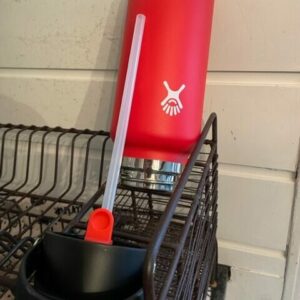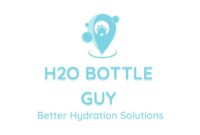As a constant hydration companion, your Hydro Flask bottle requires regular cleaning for optimal performance. This article reveals the best methods for eliminating funky smells, removing stains, and inhibiting bacteria buildup through both daily upkeep and periodic deep cleaning.
Over time, gunk inevitably accumulates, needing attention for purity and durability. Proper techniques using common household ingredients easily restore functionality for years of reliable service.
What Is the Best Method to Clean My Hydro Flask Bottle?
For daily cleaning, hand washing with warm water, mild scent-free soap, and a sturdy bottle brush and non-abrasive scrub pad is ideal for Hydro Flask materials, lifting residue without risk.

- Scrub interior walls, targeting buildup inside lid crevices and bases.
- Rinse thoroughly until bubbles disappear, indicating no soap remains. Invert and air-dry upside-down overnight. The time investment preserves integrity.
- For deeper periodic cleaning, combine baking soda and vinegar for an effervescent cleansing solution that dissolves oils and residue. Or use unscented denture tablets to deodorize fully.

More best-practice cleaning guidance provided later ensures optimal results. Proper technique and frequency preserve purity.
Can I Put My Hydro Flask Bottle in the Dishwasher?

While convenient, dishwasher heat and harsh detergents age exteriors faster through clouding, dull streaks, and scratched decals. The intense jets also drive debris deeper into bottle crevices.
For occasional deep cleaning, a short, isolated dishwasher cycle likely won’t immediately damage your Hydro Flask. But for daily use, hand washing is gentler on materials over the long term. The extra time pays dividends in lifespan.
For more details check out:
For day-to-day cleaning, nothing beats handwashing.
What Cleaning Agents Are Safe to Use on My Hydro Flask Bottle?
To avoid risks when cleaning, use non-abrasive homemade solutions:
- Baking Soda gently lifts residues
- White Vinegar removes stains
- Lemon Juice cuts grease
- Hydrogen Peroxide eliminates odors
In a pinch, these commercial cleaners also work:
- OxyClean: Foaming action lifts gunk
- Unscented Denture Tablets: Fizzing formula deodorizes
- Water bottle sanitizing tablets: Cleans and sanitize the bottle interior
Avoid harsh chemicals over time, including bleach, which can damage finishes and stainless steel. Let’s examine the ideal cleaning frequency.
Pro Tip:
While convenient for most bottle cleaning challenges, dish soap should be limited to a pH-neutral gentle formula without added moisturizers or degreasing agents to limit seal degradation over repeated long-term use.
How Often Should I Be Cleaning My Hydro Flask Bottle?
To keep your Hydro Flask performing optimally for years:
- Daily: Hand wash with a bottle brush using mild soap after each type of beverage. Fully dry, invert overnight.
- Weekly: Scrub tough buildup and sanitize using non-abrasive homemade solutions.
- Monthly: Descale fully with a white vinegar soak to prevent mineral deposits from affecting taste.
By adhering to that consistent cleaning system, your Hydro Flask should stay pristine and pure-tasting for years before any deterioration emerges.
How to Remove Odors from a Smelly Hydro Flask?
Has your once-aromatic vessel become outright rancid or funky despite dedicated cleaning attempts?
Attack offensive odors inside stained bottles using these homemade smell solutions:
- Baking soda: As an alkaline base, sodium bicarbonate destroys acidic odor molecules on contact, lifting stubborn lemon juice or vinegar scents. (Make a paste with water for added scrubbing power.)
- White Distilled Vinegar: This acetic acid cuts accumulated greasy odors and removes hard water film missed by soap during inadequate cleaning sessions. (Gets into cracks missed by bottle brushes.)
- Lemon Juice: The natural oils and citric acid in lemons act as a strong detergent alternative to tackle offensive aromas like curdled milk scents or gasoline fumes through acidic reactions, neutralizing the worst airborne offenders.
- Bottle Cleanser Tablets: As an overnight fizzy soak, enzymes devour organic particles, producing odors inside enclosed bottles, while minty elements actively cancel lingering liquid essence.
For truly nasty smells not mitigated by homemade mixes, break out the oxygenating commercial cleaners as a last resort while exercising finish and seal protection caution.
With rigorous scrub attention upfront, odors should never own your Hydro Flask.
Is It Safe Using Vinegar or Lemon Juice to Clean My Hydro Flask?
Yes, vinegar and lemon juice represent gentle cleaner options perfectly safe against Hydro Flask’s stainless steel construction when used properly for periodic cleaning.
Neither poses deterioration risks from occasional contact.
Distilled white vinegar only registers at about 2.5 pH (source), making it mildly acidic enough to break down the mineral scale and soap residues while remaining non-reactive against high-quality food-grade 18/8 stainless steel when deployed for short cleaning sessions. Rinse fully afterward.
Similarly, fresh lemon juice provides a natural citric cleansing action of around 3.5 pH strength, letting it cut grease and large debris particles easily lifted away by a bottle brush. Like vinegar, no direct corrosive reactions occur against chrome steel.
Both solutions work significantly gentler over time than harsh chemicals like bleach or ammonia that degrade metal and erode lining seals when used habitually.
For easy odor removal and sanitization without long-term wear, white vinegar and lemon juice make ideal non-abrasive homemade cleaners.
Can I Safely Use Baking Soda to Clean Inside My Hydro Flask?
Yes, baking soda not only poses zero risks against your bottle’s brushed stainless steel lining, but it actually counteracts negative issues that degrade taste and structural integrity over time.
Baking soda, that is, sodium bicarbonate is a commonly found substance with a pH level of 9.
unacademy.com
This gentle alkalinity provides just enough fizzing lift through sodium ions to scrub loose staining and neutralize building acidity from frequent drinks with lower pH profiles like citrus juices, teas, and unfiltered coffee storage.
Mixing baking soda with other solutions like lemon juice and vinegar initiates an effervescent chemical reaction, producing CO2 bubbles that lift grime easily, rinsing away all loosened residues.
This leaves behind a fresh, clean slate inside your Hydro Flask without any risks of corrosion common with prolonged black coffee contact or sugary soda storage eating away at seams over time through acidic erosion.
Use a baking soda paste regularly with soft sponges and bottle brushes to eliminate odors and maintain a like-new interior condition over your Hydro Flask’s lifetime, avoiding deteriorating plastic aftertastes.
How Do I Clean the Sip Lid and Straw of My Hydro Flask?
Don’t forget to clean the often-overlooked cap components contacting liquids.
- Periodically soak removable stopper seals, integrated straws, and flexible mouthguards in warm, sudsy water.
- Gently scrub away debris caught in cracks using an old toothbrush or tiny bottle brush.
- Pay special attention to thin straw channels using pipe cleaners to ensure full agitation on trapped gunk.
Ensure complete air drying overnight after washing parts before reattaching to the bottle exterior.
check out this quick video about how to disassemble, clean, and reassemble your hydro flask Wide Mouth Flex Sip™ lid
For quick sanitization between fill-ups, soak cap pieces in equal white vinegar and hydrogen peroxide solution for 5–10 minutes, then rinse with clean water fully before securing tightly and storing for transport.
What Are the Steps to Deep Clean My Very Dirty Hydro Flask?
Has your dependable flask turned outright grimy or lackluster despite regular wash attempts?
Revive dingy bottles from rough outdoor adventures using this proven 6-stage intensive revival blueprint:
1) Remove all cap pieces possible and set aside for later dedicated focus
2) Create a thick baking soda paste to aggressively scrub away stubborn residues
3) Thoroughly rinse with hot water until completely clear; dry fully
4) Fill the bottle with lemon juice, white vinegar, and 2 denture tablets
5) Vigorously handshake and soak for 1-2 hours maximum
6) Rinse with hot water repeatedly until no lemon scent traces remain
Follow that comprehensive process whenever daily cleaning fails and noticeable deterioration emerges, necessitating rehabilitation of your formerly trusty Hydro Flask vessel.
Staying ahead through consistent care reduces this need drastically over years of reliable service.
How Can I Prevent Mold Growth Inside My Hydro Flask?
Because of its well-insulated vacuum seal properties, any liquids left sitting beyond 12 hours risk developing toxic black mold internally around caps and obscured upper air pockets without sufficient drying precautions between uses.
Prevent unhealthy biofilm formation by:
1) Never store beverages after daily adventures without hand-washing your Hydro Flask
2) Storing upright, open-lidded containers whenever not actively transporting liquids
3) Allowing complete inverted drying on racks before finally sealing caps
4) Swirl around some white vinegar in your Hydro Flask for a weekly sanitizing rinse
Assuming general daily use patterns without excessive batch storage periods, following that simple mold prevention checklist should easily minimize the risks of pinhole fungal colonies growing in concealed voids.
Can I Safely Use Small Amounts of Bleach Cleaning My Bottle?
As a general rule, no.
The harsh chlorine degrades stainless steel and protective exterior coatings over repeated exposures through microscopic pitting, even when heavily diluted, making this seemingly convenient cleaning product unsuitable for long-term Hydro Flask care.
While household bleach solutions may lift some organic staining and sanitize economy plastics when facing bio-hazard level container filth, gradual corrosion damage occurs, dissolving the passive layer and defending durable steel against weathering once that barrier gets compromised after initial use cycles.
Are Hydro Flask Branded Bottle Brushes and Other Specialty Cleaning Tools Needed?
While regular dishwashing brushes work fine for cleaning duties, Hydro Flask does offer its own signature line of specially sized brushes tailored for optional convenience, tackling their particular bottle silhouettes and threads if desired.
The Hydro Flask company offers:
- The “Clean and Bright Bundle Cleaning Set“. Bottle Brush, Straw & Lid Cleaning Set, and Natural Cleaning Tablets make it easy to keep your Hydro Flask in tip-top shape.
- Water Bottle Cleaning Tablets. Bottle Bright’s effervescent bubbles fizz away stains & odors from your favorite water bottles and beverage containers.
- Nylon Bottle Brush for bottles, tumblers, mugs, and more.
- Bottle Straw Cleaning Set. Cleaning set for caps, lids, straws, and hard-to-reach areas.
- Water Bottle Drying Rack. The Bottle Drying Rack is designed to hold up to six 32-ounce Wide-Mouth Hydro Flask bottles with plenty of room for caps and accessories.
Fizzing Cleaning Tablets with proprietary foaming action activated by water for occasional deeper cleaning soaks lift lime and mold issues.
Conclusion:
A Hydro Flask water bottle is designed for years of adventure together through durable stainless steel construction insulation. But longevity and purity in performance require consistent cleaning diligence, keeping grime at bay. Now armed with an in-depth understanding of the optimal techniques both daily and deep down, ensuring no deterioration footholds take shape, may your traveling hydration source provide smooth sipping for every extreme.
Meet filth face forward by promptly responding to cleaning challenges before they spiral. Stay ahead through fundamentals like cap component scrubbing, emergency bleach avoidance, and getting drying right. Enable greatness by vigilantly caring about small things, allowing your Hydro Flask to simply focus maximum energy exclusively toward the bigger goal of delivering pristine taste where the action happens without distraction. Make the most of your stainless steel ally—keep the caretaking commitment.
FAQ’s
Q: How long can I store milk or juice inside a Hydro Flask?
A: Limit storage to 8–12 hours maximum for dairy, juices, and perishable liquids even when chilled to avoid bacteria issues from proteins and sugars evaporating onto untreated walls.
Q: Should bleach be used in cleaning bottles over time?
A: Avoid extended bleach exposure given the stainless steel corrosion risks, despite the anti-microbial benefits requiring eventual seal replacements.

About Me
I’m Paul Burkhardt, an expert in water and water treatment since 2006 with in-depth experience not only in treating water but also in helping to provide people with healthier, high-quality drinking water.
I’ve helped thousands of people with their drinking water questions, including what kind of water bottle might be best for them and their lifestyle.
If you’d like more information about me, please check out the links below or read more here:

